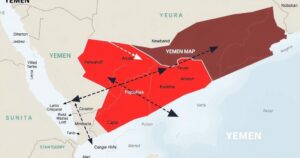Clarification on B-2 Bombers and MOP Deployment in Yemen

U.S. Air Force B-2 bombers have not used GBU-57/B MOP bunker busters on Houthis in Yemen since a recent campaign was launched. Official sources confirmed that reports of such strikes are inaccurate. Future deployment of MOPs could be linked to military strategy concerning Iran and the current limited stockpile of these munitions.
Recent reports indicate that U.S. Air Force B-2 stealth bombers have not conducted any strikes utilizing GBU-57/B Massive Ordnance Penetrator (MOP) bunker buster bombs on Yemen’s Houthis since the Trump administration reinvigorated military actions against them. Despite claims to the contrary circulating in the media, official sources confirmed that no MOPs had been deployed against Yemeni targets in the previous two months.
This clarification arose after a Fox News segment suggested MOPs were used recently, prompting The War Zone (TWZ) to verify the information. A U.S. defense official affirmed that the GBU-57/B had not been employed in recent operations, with a second official reiterating this assertion based on information available at the time.
B-2 bombers have undertaken missions from Diego Garcia targeting the Houthis, yet details about the specific munitions employed remain undisclosed. Reports also highlighted that the Pentagon has provided minimal information since mid-March regarding the ongoing campaign, further complicating the situation.
TWZ’s examination of satellite imagery revealed no significant damage to tunnel complexes suspected of being used by the Houthis. This lack of visible destruction does not exclude the possibility of bunker buster bombs being utilized, as satellite imagery has limitations in capturing fine details that may stem from such strikes.
While there are indications that the B-2s could potentially deploy GBU-57/Bs in future missions against Houthi targets, any decision would need to consider the stockpile’s size, which remains relatively limited. The strategic advantages of deploying MOPs extend beyond immediate combat effectiveness; they serve as a signaling mechanism to Iran regarding the capabilities of U.S. military assets.
Current negotiations concerning Iran’s nuclear ambitions may influence future military strategies, including the potential use of MOPs in Yemen. Should military action against Iran be deemed necessary, those valuable munitions would likely be prioritized for targets of greater strategic importance than Houthi missile and drone stockpiles.
In summary, while B-2 bombers have not deployed MOPs against Houthis in Yemen recently, their potential future use remains a critical aspect of U.S. military strategy and signaling, particularly in relation to Iran. The need for careful consideration of the limited stockpile of these munitions underscores the balance necessary between military readiness and strategic messaging. The ongoing negotiations with Iran and the outcomes of these discussions will likely shape the future of U.S. military operations in the region.
Original Source: www.twz.com








